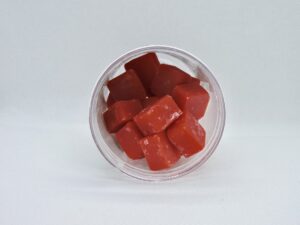Material Options for the Best Crossbow Targets
Introduction: Selecting the right material for a crossbow target is essential to ensure durability, effective arrow-stopping power, and prolonged usability. This review will explore different best crossbow targets options and evaluate their advantages and disadvantages.
- High-Density Foam:
- Description: High-density foam targets are constructed using tightly compressed foam blocks or layers.
- Advantages:
-
- Excellent arrow-stopping power, preventing pass-throughs and reducing the risk of arrow damage.
- Self-healing properties allow the foam to recover and close up after arrow impacts, prolonging the target’s lifespan.
- Lightweight and portable, making them easy to transport and set up.
- Versatile, suitable for both field points and broadheads.
- Disadvantages:
-
- Outdoor exposure to extreme weather conditions may affect the foam’s longevity and performance.
- Over time, repeated arrow impacts may cause the foam to degrade and lose its stopping power.
- Layered Synthetic Fiber:
- Description: Layered synthetic fiber targets consist of compressed layers of synthetic materials, such as ballistic fabric or polyethylene.
- Advantages:
-
- Exceptional stopping power, effectively halting arrows and preventing pass-throughs.
- Durable and long-lasting, with the ability to withstand thousands of shots.
- Minimal arrow damage due to the fibers’ ability to spread the force of impact.
- Disadvantages:
-
- Heavier and bulkier compared to foam targets, making them less portable.
- May require more effort to remove arrows, especially for high-velocity crossbow bolts.
- Outdoor exposure may cause degradation and affect overall performance.
- Self-Healing Gel:
- Description: Self-healing gel targets utilise a gel-like substance that can absorb and encapsulate arrows.
- Advantages:
- Excellent arrow-stopping power, with the gel material absorbing the impact and preventing pass-throughs.
- Self-healing properties allow the gel to reform and seal around the arrow hole, extending the target’s lifespan.
- Easy arrow removal, as the gel material does not grip the arrows tightly.
- Disadvantages:
-
- Gel targets tend to be bulkier and heavier, reducing their portability.
- Limited availability compared to foam or synthetic fibre targets.
- The gel substance may become less effective over time with repeated use.
Conclusion:
Each best crossbow targets offers advantages and disadvantages when considering material options for crossbow targets. High-density foam targets provide excellent arrow-stopping power, portability, and versatility but may degrade over time. Layered synthetic fibre targets offer exceptional durability and stopping power, although they can be heavier and more challenging to remove arrows. Self-healing gel targets provide effective arrow stopping and easy removal but may be less readily available.
Ultimately, the choice of material depends on personal preferences, shooting requirements, and considerations such as portability, lifespan, and ease of use. Assess your specific needs and prioritise factors like durability, arrow-stopping power, and target maintenance when selecting the best material for your crossbow target.
Continue Reading












































